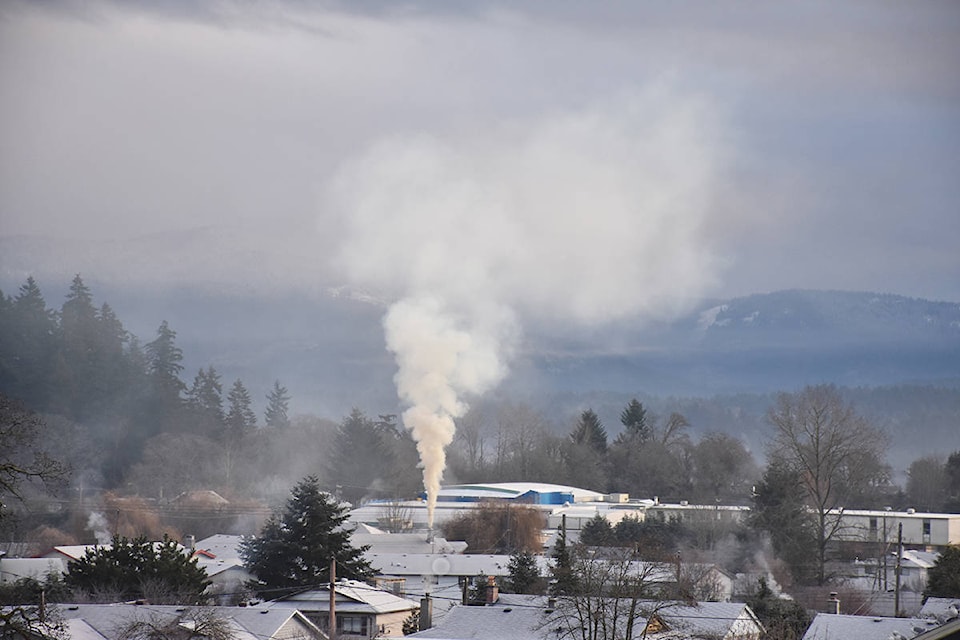The Cowichan Valley Regional District and its partners in clean air have been voted as the Clean Air Champion for 2017 by the BC Lung Association.
Each year, the association’s air quality and health steering committee awards the title of Clean Air Champion to a deserving recipient who has made a significant contribution to air quality.
For several years, the air in Cowichan Valley has exceeded the national standards for fine particulate matter.
In response to the growing concerns, the CVRD and partnering organizations stepped forward and began initiatives such as developing Cowichan’s regional air shed protection strategy, forming a collaborative round table on the issue and exploring alternatives to older wood-burning appliances and open burning.
In a statement, the Cowichan Fresh Air Team, formed a decade ago in response to the poor air quality in the Cowichan Valley, said it’s an “honour” for the district, CFAT and other groups to be recognized for the work they do.
But the statement said CFAT has deep concerns around the Municipality of North Cowichan’s recent moves to remove the two-month-a-year window for burning and allow North Cowichan property owners with more than two acres of land to burn year-round.
In accepting the award, CVRD chairman Jon Lefebure said the air shed knows no jurisdictional boundaries.
“Collaboration is important as we truly do share the air we breathe,” he said.
“The award of Clean Air Champion recognizes the efforts of a dedicated group of residents and organizations working together for healthier communities.”
The CVRD released an extensive air shed protective strategy in 2015, noting that hospital admissions for children with respiratory diseases were on average 70 per cent higher in the Valley than the rest of B.C. between 1998 and 2012.
The report also found asthma rates were 14 per cent higher and chronic respiratory illness in people over 45 was 50 per cent higher in the Valley.
The geography of the Valley, ringed by mountains, means bad air is often held at ground level at certain times of the year, the report stated.
The statement from CFAT suggested that is why the plan by North Cowichan to expand backyard-burning times is “unacceptable.”
“Although (North Cowichan’s engineering technologist) Shaun Chadburn claims he gave notice in February to the CVRD’s Airshed Roundtable regarding the proposed changes, both the chairperson, the leaders and members of the Airshed Forum did not perceive it as such,” the statement said.
“It was presented in such an oblique fashion nobody was property apprised of suggested bylaw changes coming forthwith. It is the responsibility of North Cowichan to forward their proposed changes to the air shed committee and the open burning subcommittee.”
In its own statement in response to these concerns, North Cowichan said the current fire protection bylaw lacks enforceability and allows burning across the municipality, including in urban areas, as long as a certain setbacks are maintained from other properties.
The statement said the proposed bylaw will be more enforceable and completely eliminate burning on parcels under two acres within the urban containment boundaries.
“It also bans burning of large-scale debris from land development both inside and outside the UCB on properties of any size,” it said.
“Finally, in light of council’s direction, discussions with the Ministry of Environment, and input from the community, staff will propose that council consider extending the open burning windows rather than eliminate them completely.”
According to the municipality’s statement, these changes will reduce smoke exposure in most residential areas, eliminate many large-scale burns, increase setbacks from smoke for neighboring property owners, reduce the amount of nuisance complaints to the municipality, and smooth out any spikes in emissions and reduce situations where air quality exceeds Ministry of Environment limits.
